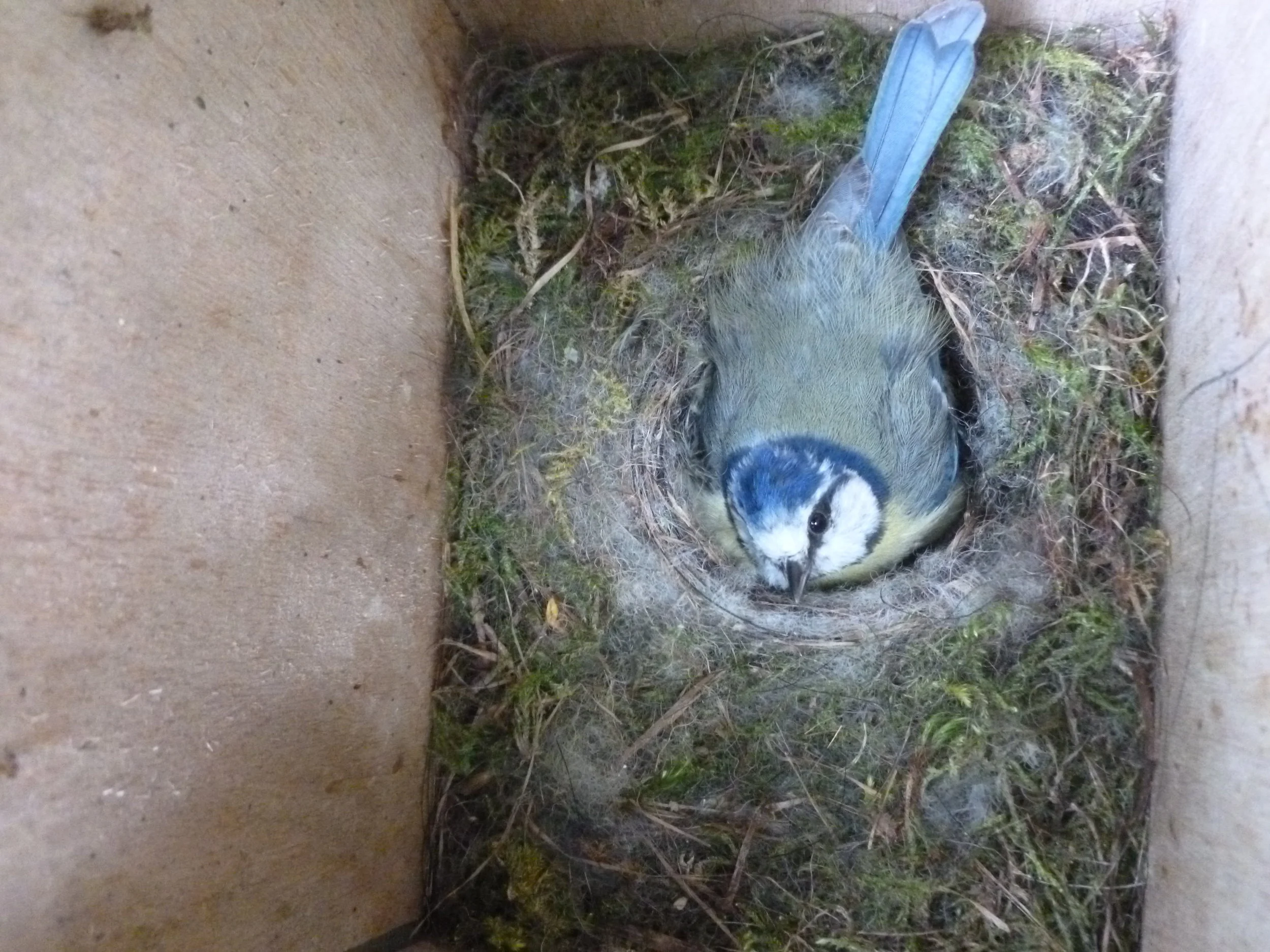As well as annual breeding bird surveys, conducted with enormous help from Keith, we have tried throughout to keep our eyes open for the birds and to encourage them with the help of boxes. We have made the boxes during the winters and put them up in early Spring. Tradition has it that the day for this is St Valentine's Day. We recycled offcuts from the shed cladding and followed RSPB designs and guidelines. Different birds go for different types of boxes. We made a variety: some with very small openings, some with larger openings, some with open fronts and of course the still 'To Let' barn owl box. We have checked the boxes, perhaps not as regularly as we could, finding that of the 34, roughly a third of them are used each year; the majority of inhabitants are blue tits. One special delight was the nuthatch in Box 11.
In 2023 we added several more small boxes and now have 45.
Here are the results of breeding bird surveys so far:
2014, 2015, 2016, 2017, 2018, 2019, 2020 , 2021 2022, 2023, 2024
Here are the results for the bird box surveys so far:
2015, 2016, 2017, 2018, 2019, 2020, 2021, 2024
Having seen a family of redstarts in the Orchard, long-tailed tits on the Wildflower Meadow and bullfinches near the Scrub and in the Pit Wood, the birds must, as expected, be making their own arrangements for accommodation, whether through Trivago or Airbnb we cannot tell.
Each year there is predation. Broken pheasant and wood pigeon eggs appear regularly and boxes are abandoned or raided. We have the usual range of culprits - crows, magpies, jays, fox, stoat, grey squirrels, sparrowhawk, tawny owl, kestrel and woodpecker. These are all part of the biodiversity for which we strive. (Except grey squirrels - we have declared war!)
We realise that some of our activities, especially the felling, brashing and thinning of the trees, have destroyed some nesting possibilities but by and large the bird population has remained steady. We try each year to limit the impact we make on the various sections rather than attempt to do all the work in one go. We might make more boxes, however we believe more monitoring and moving of the less popular boxes may be just as beneficial. As with all our endeavours the bird boxes are providing learning opportunities.
The location of the first bird boxes can be seen below.
And in 2024, the map looks like this:
Thanks to Sally for the banner photo.
In 2024 John and Clare were delighted to welcome Ruth to Liddells. Ruth is a qualified bird ringer who was looking for places where she could carry out CES (Constant Effort Sites) surveys for the British Trust for Ornithology. She had a successful first year, ringing 337 separate individual birds. You can see her table of results here. She also ringed a Yellow-browed Warbler that appeared on Liddells on migration in October. You can see a photograph of this bird on the Gallery page for 2024.
